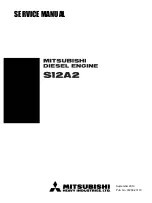
C
L E A R
P
A T H
U
S E R
M
A N U A L
R
E V
.
1 . 9 7
4 9
F
OLLOW
D
IGITAL
V
ELOCITY
C
OMMAND
(B
I
-P
OLAR
PWM
I
NPUT
)
M
ODE SUMMARY
Connect a digital PWM waveform from your PLC or other device, and
ClearPath will run at a velocity proportional to the duty cycle of that
waveform. Or, use the PWM output from an H-bridge driver of a brushed
motor setup and ClearPath becomes a high-performance drop-in
replacement.
H
OW IT WORKS
Assert the Enable Input to energize the motor. Control motor speed and
direction by modulating the duty cycle of the PWM signal. Assert the
Inhibit signal (Input A) to immediately ramp to zero velocity. See figure
below and read text for timing and PWM requirements.
Signal
Function
Input Type
Input A
Motor velocity vs. time
Input B
Enable
Inhibit (optional)
Speed/Direction
Enable
NA
NA
Trigger
Logic: High=Inhibit on Low=Inhibit off
Pulse: Variable PWM
Logic: High=Enable Low=Disable
0
1
0
1
t
v
Example Timing
Notes:
Asserting Inhibit Input causes immediate ramp to zero speed. See text for
information on deadband set up and application.
0
1
0
1
Inside deadband
Inhibit on
Duty cycle of applied PWM signal (%)
Follow Digital Velocity Command (Bi-Polar PWM Command)
Velocity Control
90%
50%
10%
Follow Digital Velocity Command (Bi-Polar PWM Control): Inputs and Timing Diagram
Notes:
•
PWM input frequency range: 20 Hz up to 30 kHz.
•
If the PWM signal is off for 50mS or more the PWM input is
considered off. This is interpreted by ClearPath as a zero-
velocity command.
•
Disable time = 10 mS
•
Command ClearPath to immediately ramp to zero velocity by
asserting the Inhibit Input (Input A). De-assert Input A to
resume normal operation.
or
•
Set a PWM deadband to help reliably command zero velocity.
Read text for details on deadband setup.
•
PWM Input, especially at higher frequencies, tends to have
more inherent inaccuracy. If a very high level of velocity
accuracy is important for your application, consider using
Frequency Input mode.
T
EKNIC
,
I
NC
.
F
AX
(585)784-7460
V
OICE
(585)784-7454
















































